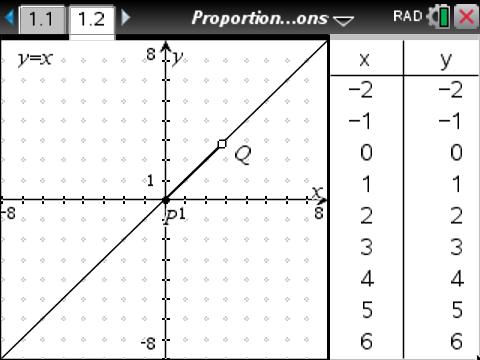Proportionality in Tables, Graphs, and Equations

Proportionality in Tables, Graphs, and Equations
Students will recognize and identify the characteristics of proportional and non-proportional relationships by analyzing a table, equation, and graph.
- Students will recognize and identify the characteristics of proportional and non-proportional relationships by analyzing a table, equation, and graph.
- ratio
- slope
- y-intercept
- constant rate of change
- proportional
- non-proportional
This lesson involves analyzing changes in tables, equations, and graphs of lines to determine proportionality.
As a result, students will:
- Explore how a change in one representation affects another representation.
- Determine that a relationship is proportional if the ratio of the y-coordinate to the x-coordinate for each point on a line stays the same and the line goes through the origin.
- Determine that a relationship is non-proportional if the ratio of the y-coordinate to the x-coordinate for each point on a line is not the same and the line does not go through the origin.
Vernier EasyData,Vernier EasyLink and Vernier EasyTemp are registered trademarks of Vernier Science Education.

